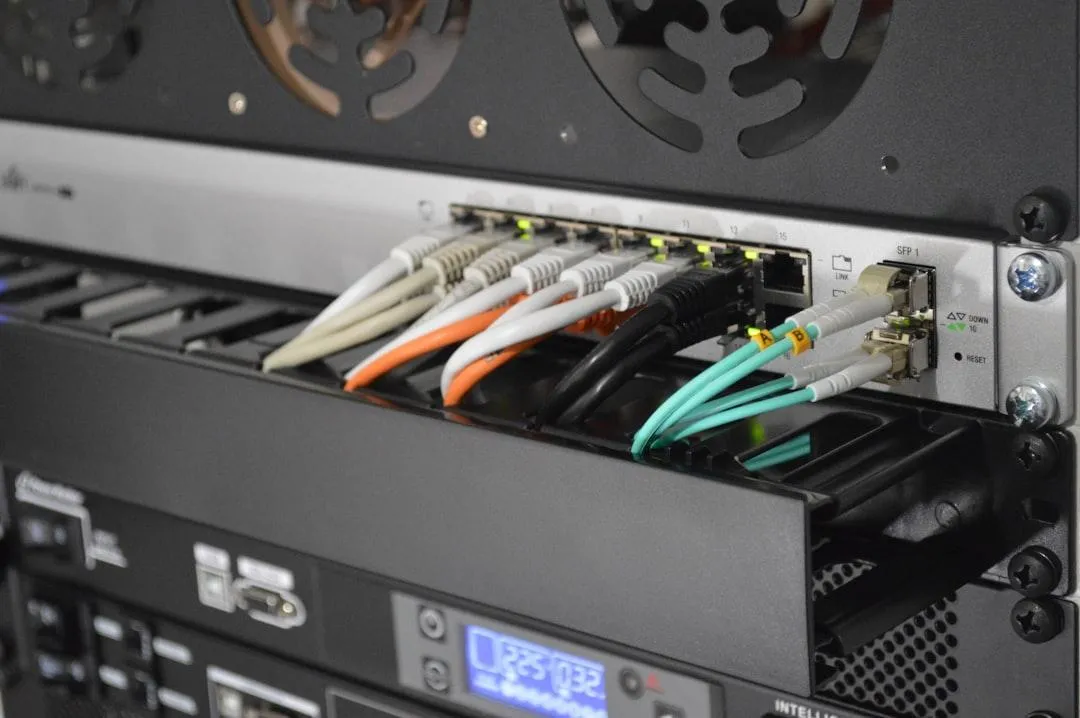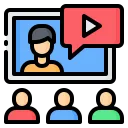
Why Your Cold Outreach Fails (And how to Fix It in 2025)
Cold outreach isn’t dead. It just doesn’t work the way it used to.
In 2025, sending a few cold emails or LinkedIn messages and hoping for replies rarely delivers results. The average reply rate sits at just 1% to 5%, while top-performing teams consistently hit 10% to 20% (McKinsey).
So, what are they doing differently? They use smarter targeting, better timing, and AI-driven systems to reach the right people with the right message.
This guide explains why most cold outreach strategies fail and walks you through seven proven ways to fix yours using modern, multi-channel techniques.

1. You're Targeting the Wrong Audience
According to Gartner, 68% of B2B buyers say salespeople don’t understand their business needs. That usually starts with poor targeting.
If you’re messaging companies that don’t fit your Ideal Customer Profile (ICP) or reaching out to job titles that don’t make buying decisions, no level of personalization or persistence will fix your results.
How to Fix It:
Rebuild your ICP using actual data from past customers, not just assumptions.
Look beyond basic filters like company size or industry. Add signals like recent hiring trends, tech stack, growth indicators, and funding news.
Use tools like kwAI, Apollo, or Clearbit to score leads against your ICP and eliminate poor fits before outreach even starts.
Pro tip: Audit your top 20 most engaged prospects each month. Identify what they have in common and update your ICP accordingly. Better inputs lead to better replies.
2. Your Message Sounds Like a Template
Most prospects decide whether to keep reading your message in under seven seconds. If it feels generic, salesy, or robotic, they’ll ignore it... no matter how good your offer is.
Messages that open with “I came across your profile” or “Thought you’d be a good fit” immediately signal mass outreach. And personalization that feels forced (like mentioning where someone went to college) does more harm than good.
How to Fix It:
Start with a pain point or insight that is relevant to their role or industry.
Mention something timely or strategic, like a recent hire, product launch, or market trend affecting their team.
Keep the language simple, casual, and focused on their challenges... not your product. Remember, prospects care about one thing... their problems.
Example:
“Saw your team just expanded the sales org. Are you also scaling outbound? We’re working with similar teams to help SDRs book more meetings without burning time on bad leads."
Pro tip: Before sending any message, ask yourself: “If someone sent this to me, would I reply?”
3. You're Reaching Out at the Wrong Time
Even a perfect message can fail if the timing is off. Prospects who just switched roles, recently signed with a competitor, or aren’t experiencing urgent pain won’t respond, no matter how good your offer is.
Timing isn’t just about time of day. It’s about context. If they aren’t actively looking for help, your message feels irrelevant.
How to fix it:
Track trigger events like job changes, funding rounds, product launches, or open job roles. These signals often indicate shifting priorities or new budgets.
Use tools like kwAI, Sales Navigator, or Clay to monitor activity across LinkedIn, company news, and tech adoption trends.
Build outreach cadences that adapt. If a prospect opens your email but doesn’t reply, follow up sooner. If they ignore it, wait and try a different angle later.
The New Rules for Successful Outreach in 2025
The game has changed. Buyers are overwhelmed, more skeptical than ever, and quicker to delete anything that looks like a pitch. If your cold outreach strategy still relies on volume over relevance, you're leaving results on the table.
High-performing teams in 2025 follow a new playbook. It’s not about sending more messages. It’s about sending smarter ones. Below are four key principles that separate average outreach from what actually gets replies.
Rule #1: Lead Quality Beats Lead Quantity
Spraying 5000 messages at a list isn’t a strategy, it’s a gamble. And most of the time, it loses. High-performing teams don’t waste time chasing bad leads. They focus on high-fit accounts that are actually in a position to buy.
According to McKinsey, B2B sales teams using AI to qualify leads see 2 to 4 times higher reply rates and save 25% to 40% of their outreach time.
How to Do It Right:
Use kwAI to score your leads before outreach using both firmographic data (industry, size, region) and behavioral signals (growth, hiring, funding, tech stack).
Use platforms like kwAI or Clearbit (Now Breeze Intelligence for HubSpot) to enrich data and eliminate bad-fit leads early.
Align your messaging with the prospect’s current priorities instead of blasting the same message to everyone.
Pro tip: Fewer, higher-quality messages consistently outperform high-volume outreach in reply rates, booked meetings, and pipeline value.

Rule #2: Personalization Only Works When It's Relevant
Mentioning someone’s university or a random LinkedIn post might technically count as personalization, but it doesn’t make your message more effective. Buyers don’t care that you scrolled their profile. They care whether you understand their challenges.
Real personalization speaks to their business context, not their biography.
How to Do It Right:
Focus on role-based problems. A Head of Operations cares about process inefficiencies, not ad performance. A VP of Sales cares about quota, not branding.
Tie your message to a relevant insight, not a generic compliment. For example, “Congrats on the new funding” is better than “I was impressed by insert generic topic”
Personalize your message structure too; shorter for C-suite, more detail for managers, and always aligned to urgency.
Example:
“I saw your team is expanding your outbound efforts. Are you also looking at ways to cut time spent on prospect research? We’re working with other B2B teams in your space to solve that exact issue using AI.”
Pro tip: If your personalization can be used for 10 other prospects without changing anything, it’s not real personalization.
Rule #3: Try More Than One Channel
Relying on a single channel, whether it’s email, LinkedIn, or calls limits your chances of getting noticed. Today’s buyers are distracted, mobile, and flooded with messages. A multi-channel strategy increases the odds that your message lands when and where it matters.
How to Do It Right:
Start with email and LinkedIn in parallel, this can also be done using InMail in LinkedIn. Connect and engage with content while also reaching out via inbox.
Follow up with a quick call or voicemail once there's engagement or familiarity.
Add SMS or voice drops only when appropriate, typically after prior contact or intent signals.
Recommended Sequence:
Day 1: LinkedIn connection + intro email
Day 3: LinkedIn DM or comment + second email
Day 6: Call or voicemail drop
Day 9: One more email with a soft CTA

Pro tip: Multi-channel outreach boosts response rates by up to 300% compared to email-only campaigns (source: SalesLoft Benchmark Report).
Rule #4: Sales Cadences Should Adapt to Behavior
One-size-fits-all cadences are easy to set up, and just as easy for prospects to ignore. Buyers don’t move in a straight line, so your outreach shouldn’t either. The best-performing sales teams adjust their timing, channel, and message based on how a prospect interacts.
How to Do It Right:
If someone opens your email twice but doesn’t respond, follow up sooner with a different angle.
If they connect with you on LinkedIn but don’t reply, warm them up with content or a value-driven comment.
If they’ve ignored everything, pause. Wait for a trigger event or change your outreach strategy.
Tools That Help:
Platforms like kwAI, Salesloft, and Outreach use AI to monitor prospect behavior and trigger the next best action automatically.
Key Metrics to Watch:
Email open and click rates by sequence step
Time between message and response
Best-performing channel for each persona
How to Build a Cold Outreach System That Actually Works
Following best practices is a start, but real results come from building a repeatable, data-backed system. Whether you’re a solo rep or managing a team, the steps below form a complete cold outreach engine, from targeting to optimization.
Each part builds on the last. Skip one, and the whole system weakens. Follow them consistently, and you’ll not only book more meetings, you’ll do it with less effort, better leads, and higher conversion rates.
Step-by-Step Cold Outreach Framework
This is the same structure used by top-performing SDR teams, solo founders, and AI-assisted sales platforms. Use it to build a prospecting system that’s precise, scalable, and optimized for modern buyers.
Step 1: Define Your Ideal Customer Profile (ICP)
Start with data, not assumptions. Look at your best customers and identify patterns:
Industry
Revenue range
Headcount
Role seniority
Tools or platforms they use
Business model or team structure
Use this to create a clear ICP filter before pulling any prospect lists.
Step 2: Map Pain Points to Personas
List the top three problems your product solves. Then connect each one to the specific job roles that feel that pain most.
Example:
“Manual reporting” is a pain for RevOps, not for the CMO.
Step 3: Use kwAI to Run the Entire Proces
kwAI handles the complete prospecting workflow:
Score and filter leads based on your ICP
Track real-time signals like job changes or funding rounds
Generate AI-crafted outreach messages tailored to each persona
Automate and adapt multi-channel sequences based on prospect behavior
With kwAI, you don’t need to stitch together six different tools. You get one system that handles everything from targeting to timing.
Step 4: Write Outreach That Leads With Value
Each message should answer:
Why them?
Why now?
What’s in it for them?
Use role-specific language, keep it under 75 words, and end with one clear question.
Step 5: Launch a Multi-Touch, Multi-Channel Sequence
Mix email, LinkedIn, and calls. Space them 2–3 days apart. Use different angles (pain point, case study, industry insight) across steps.
Step 6: Monitor Prospect Signals and Behavior
Track email opens, clicks, LinkedIn activity, and job changes. Use these signals to move prospects between cadences, pause cold leads, or escalate high-intent ones.
Step 7: Review and Optimize Monthly
Every 30 days:
Look at your top 10 replies and worst-performing messages
Test subject lines, intro lines, and CTAs
Refine your ICP based on closed-won data
Key Metrics to Track When Doing Outreach
Tracking the right metrics helps you understand what’s working, what needs to improve, and where your outreach is leaking results. These numbers should guide your experiments, benchmarks, and weekly reviews.
1. Open Rate
Indicates whether your subject lines or LinkedIn connection messages are catching attention.
Benchmark: 20% to 40%(email), 30 to 50%(LinkedIn)
2. Reply Rate
The most critical metric. Measures how well your message resonates.
Benchmark: 5% to 10% across all channels
3. Positive Response Rate
Out of all replies, how many were interested or open to talking.
Benchmark: 30% to 50% of replies
4. Meetings Booked Rate
Of all contacts messaged, how many result in booked meetings.
Benchmark: 2% to 5% for cold outreach
5. Time to First Reply
The average delay between sending and receiving a response. Shorter times usually signal better fit and timing.
Benchmark: Under 48 hours is strong
6. Channel Effectiveness
Which platforms (email, LinkedIn, calls) deliver the best outcomes per prospect segment.
Benchmark: Varies by industry and title, but tracking this helps optimize your sequence
Pro tip: Use kwAI to track and visualize these metrics across all outreach channels. The data is only useful if it helps you take action.
Value-Add Strategies to Stand Out When Doing Outreach
When inboxes are full and buyers are busy, sometimes it’s not your pitch that’s the problem, it’s that you’re not offering enough value up front. Modern cold outreach should feel less like a sales pitch and more like a helpful nudge.
Offer Something Before Asking for Time
Instead of jumping straight to a meeting request, offer a helpful resource, personalized insight, or industry data.
Examples:
A short Loom video breaking down their website
A one-pager relevant to their role
A mini audit or free analysis based on public data
Ask Better Questions
Avoid “Do you have 15 minutes?” or “Can we connect for a quick call?” Instead, spark thought with questions that uncover intent.
Examples:
“Are you currently evaluating ways to reduce manual prospecting time?”
“Is improving outbound efficiency a priority for your team this quarter?”
Show, Don’t Tell
Instead of explaining what your tool does, show results or comparisons.
For instance:
“Most of our users cut prospecting time by 40% in the first two weeks. Would it be helpful to see how?"
Add Real Insights
If you're reaching out to someone in RevOps, send a short, tailored take on something relevant:
“Saw your team uses HubSpot. Are you running into reporting delays when SDRs don’t log calls fast enough? That’s something we hear a lot, and I wanted to check what you're seeing.”
Pro tip: When you lead with helpful insights, people are more likely to reply, even if they’re not ready to buy right now. You’ll stay top of mind when they are.
Fixing Your Cold Outreach Shouldn't Be Optional
Cold outreach isn’t broken because people stopped responding. It’s broken because most outreach hasn’t adapted.
Buyers in 2025 are smarter, busier, and less tolerant of irrelevant messages. If you're still relying on volume over value, or one-size-fits-all cadences, you're not being ignored because outreach doesn't work, you're being ignored because your approach feels outdated.
The good news? Fixing it doesn't require working harder. It means working smarter:
Focus on quality over quantity
Personalize with relevance, not trivia
Use AI to time your messages and score your leads
Build cadences that adapt to behavior
Add value before asking for anything
Modern cold outreach should feel helpful, not transactional. And with the right system, it can be one of your most effective channels for pipeline growth.
Ready to stop guessing and start booking real conversations?
Try kwAI and see how kwAI helps you reach the right people at the right time with the right message.
Additional Sources:


























